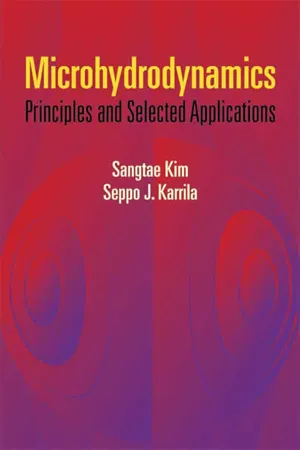
Microhydrodynamics
Principles and Selected Applications
- 544 pages
- English
- ePUB (mobile friendly)
- Available on iOS & Android
Microhydrodynamics
Principles and Selected Applications
About This Book
"This book is well organized and comprehensive... an eloquent and enduring statement of significant hydrodynamic principles." — AIChE Journal
Microhydrodynamics concerns the flow and related phenomena pertinent to the motion of small particles suspended in viscous fluids. This text focuses on determining the motion of a particle or particles through a viscous fluid in bounded and unbounded flow. Its central theme is the mobility relation between particle motion and forces.
Microhydrodynamics: Principles and Selected Applications functions as a manual that explains methods for solving particulate flows at low-Reynolds number, from analytical to computational methods. The ever-increasing growth in computational power has resulted in a similar growth in the range of solvable problems in microhydrodynamics. Suitable for graduate students in engineering and applied mathematics, this text treats the mathematical foundations and highlights the interplay of both mathematical and physical insights, guiding readers through single particle theory and problems related to multiparticle analyses.
Frequently asked questions
Information
Table of contents
- Cover
- Title
- Copyright
- Preface to the Dover Edition
- Contents
- Preface
- Organization Scheme
- I. Governing Equations and Fundamental Theorems
- II. Dynamics of a Single Particle
- III. Hydrodynamic Interactions
- IV Foundations of Parallel Computational Micro hydrodynamics
- Notation
- Index